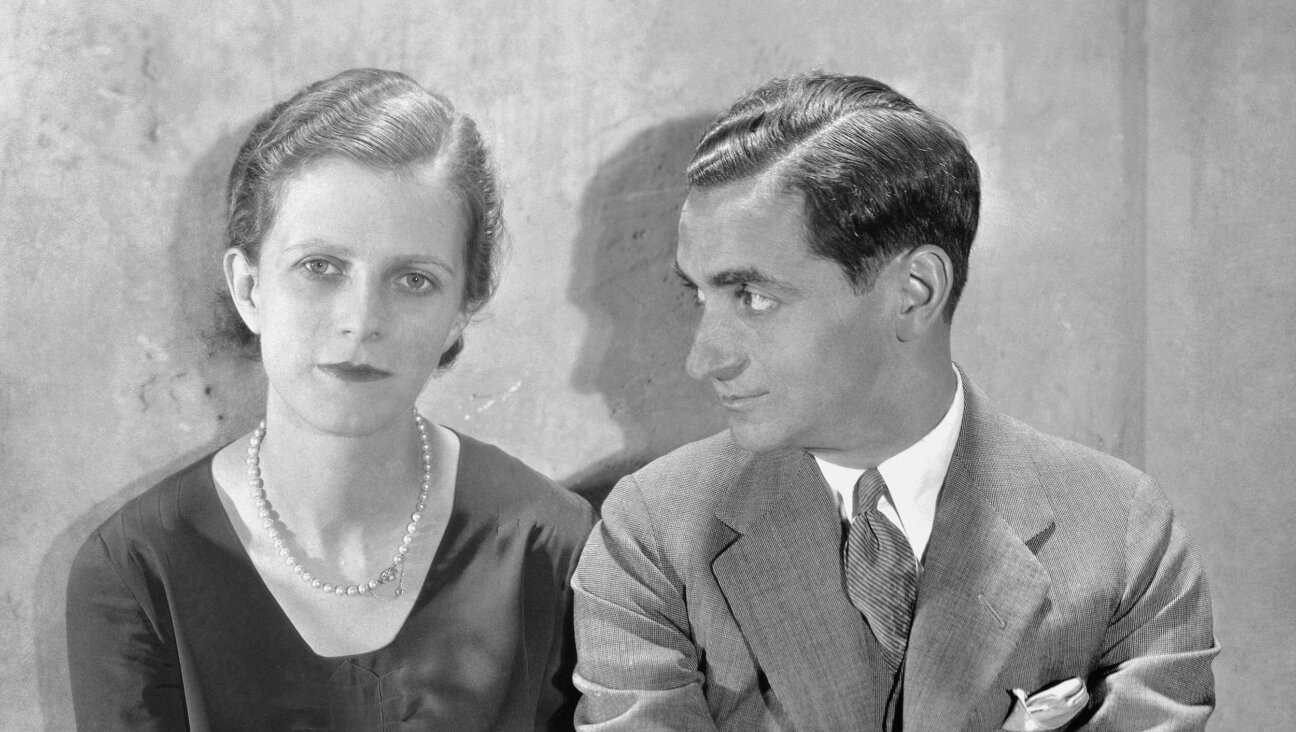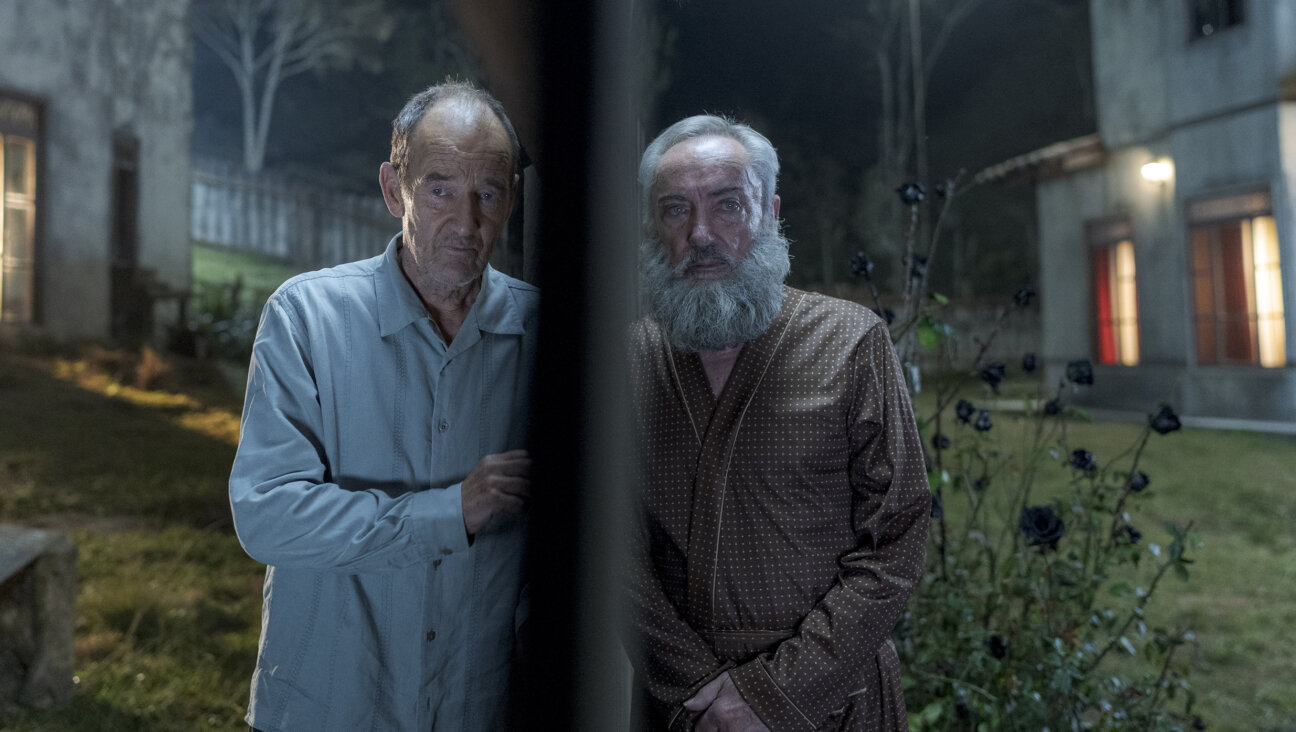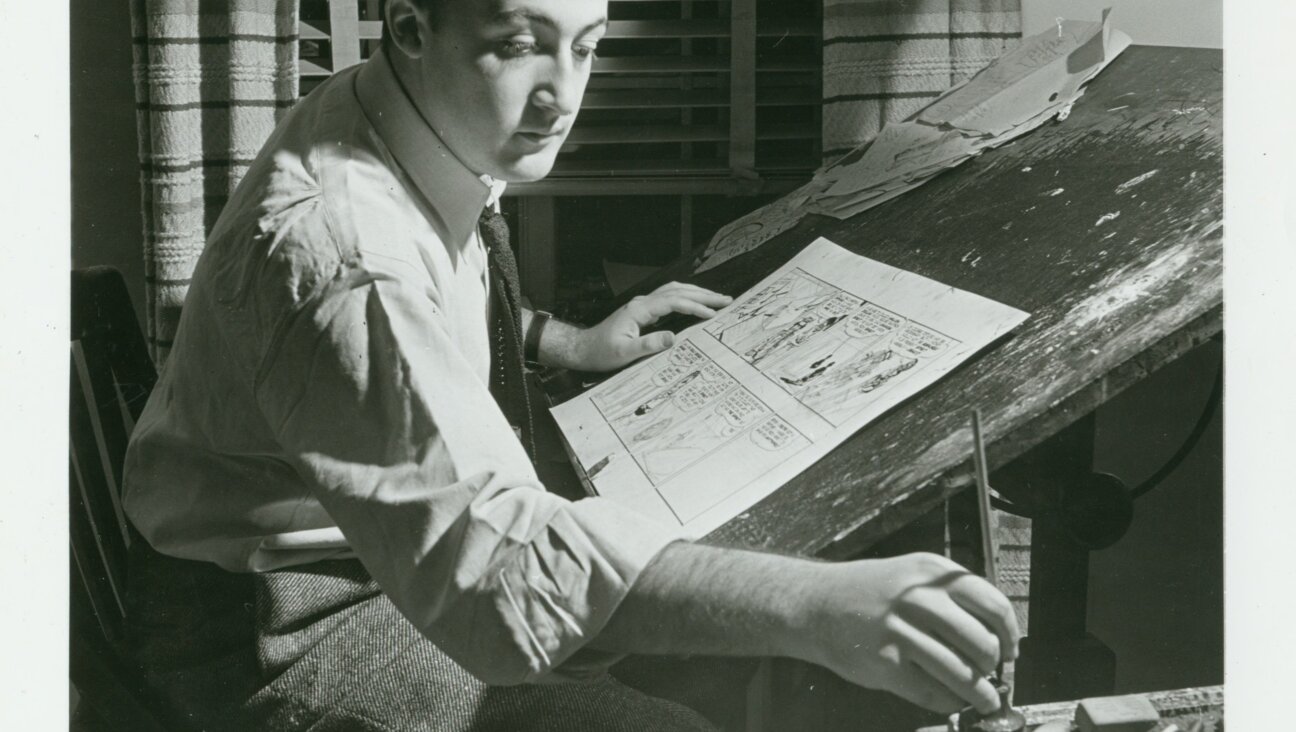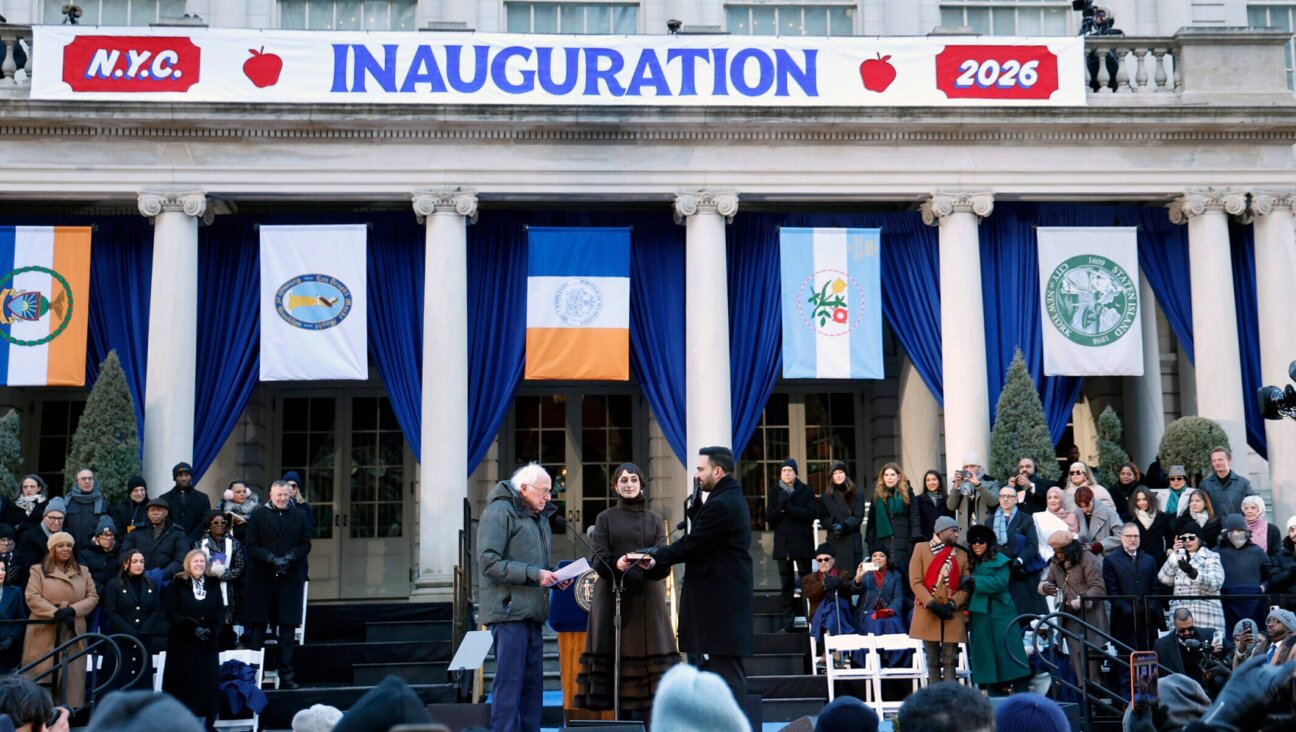Why Green Lantern is one of the most Jewish superheroes of all

A green beam of light heralds the arrival of the Green Lantern Corps By HBO
Wait, Green Lantern is Jewish too?
The answer, surprisingly, is yes. Sort of.
That most superheroes were created by Jews is nothing new. During the Depression, young Jewish New Yorkers, mostly first-generation Americans, couldn’t get work in creative industries like advertising and book publishing that were closed off to them. So they invented their own medium, the comic book, and its most popular genre, the superhero. In many cases, they imbued their creations with elements of Jewish culture.
Superman in particular has been discussed in this context, though he’s a Jewish character only metatextually, not in canon. Others are heavily hinted to be Jewish, like Spider-Man, who wisecracks compulsively, uses Yiddishisms like oy and fakakta, references Shavuos and even stepped on a glass at his wedding. Some are openly Jewish but “converted” years after their creation, like the Fantastic Four’s Thing. Some are Jewish only sometimes, like Harley Quinn, who’s paternally Jewish in the comics, maternally in her animated show, and nondescript in the movies. Most recently there’s Whistle, whose Jewishness is front and center.
But one hero who is a household name but isn’t generally thought of as Jewish, even by those who keep tabs on such things, is Green Lantern. There’s certainly no hint of it in the 2011 Ryan Reynolds movie. But the Emerald Knight is, in fact, a character steeped in Jewish lore.
Green Lantern debuted in July 1940’s “All-American Comics #16.” He was Alan Scott, a railroad engineer saved from a bridge collapse by a glowing green train lantern that was fashioned in ancient China from a prophesied talking meteor (really). Using part of it to make a magic ring, he gained the ability to fly and create constructs of solid light, then donned a flamboyant green, red, purple and yellow outfit and went off to fight crime.
Though he was created by two Jews, Mart Dellon (Martin Nodell, who also created the Pillsbury Doughboy) with help from Bill Finger (Milton Finger, who also co-created Batman), there’s nothing particularly Jewish about him. Nodell was inspired by Chinese folklore and Wagner’s “Ring Cycle” operas, themselves based on Norse and Germanic legend.
In 1959, however, a new Green Lantern was created by DC Comics editor Julie Schwartz, writer John (Irving) Broome and artist Gil Kane (Eli Katz), and they borrowed several elements from Jewish culture.
Debuting in October’s “Showcase #22,” the new version was Harold “Hal” Jordan, a test pilot chosen for his fearlessness by a dying alien to take his place in the Green Lantern Corps, an intergalactic peacekeeping force. Armed with a high-tech ring fueled by willpower that can create anything from a giant fist to a jet out of solid light, he wears the sleek green, black and white uniform to patrol the spaceways.

It’s Not Easy Being Green Lantern: A Green Lantern cosplayer attends 2017’s Comic-Con. By Getty Images
Kane modeled Jordan after Jewish movie star and former next-door neighbor, Paul Newman. The Corps’ founders, the Guardians of the Universe, the oldest and wisest beings in creation, were modeled after David Ben-Gurion, founding father and first prime minister of Israel. April 2014’s “Green Lantern: New Guardians #28” even introduced one named Gurion.
Jordan also stood apart from other DC heroes at the time, in that his civilian identity isn’t a pretense like that of Clark Kent or Bruce Wayne or an everyman like Barry Allen. He’s a hotshot pilot, “Top Gun”-style, and it’s because of his bravery that he’s chosen to become a Green Lantern. That he’s heroic before becoming super, that courage is his defining attribute and that he’s based on a Jewish action star can all be seen as Jewish reclamation in the postwar, post-Israeli independence era. (A year later, Newman would fittingly play the lead in “Exodus,” about Israel’s creation and fight for survival, setting off a trend of films that changed the Jewish image in America, at least for a time.)
Green Lantern’s abilities come from his ring, “the most powerful weapon in the universe.” Magic rings can be found in virtually all mythologies and folklore, but one of the most famous is King Solomon’s ring, or seal, which he received from heaven to fight evil. Like Lantern’s ring, it had a symbol at its center denoting a connection to a higher power source, the Star of David.
The motif of light, particularly as a force of creation, is central to Judaism. Just like Green Lantern can create anything he imagines out of light, light is what brings creation into existence in Genesis when God declares, “let there be light.” And like the Lantern Corps oath calls to shine their light upon “those who worship evil’s might,” Jews are called upon in Isaiah to be “a light unto the nations,” to those who worship false gods. The mission is the same; using light to deliver law, justice and freedom.
The Lantern rings are charged by the Central Power Battery, a massive lantern on the planet Oa, seat of the Guardians, at the center of the universe. Long before the Star of David came to represent the Jewish people and faith, the menorah — Hebrew for lamp, candelabra or lantern — was used to symbolize Judaism (today it’s the official emblem of the State of Israel). It resided at the heart of the Temple in Jerusalem, which, at the junction of Europe, Asia and Africa, was at the center of the ancient world.
What’s really interesting in this context is the original number of Green Lanterns: 3600, one for each sector of known space. No explanation has ever been given for the number, and it may be arbitrary, but it does carry a strong connotation in Jewish tradition.
Jewish thought attributes symbolic or metaphysical meaning to certain numbers, called typological numbers. For example, 7 represents the immanence of the divine in the material; it’s the number of Hebrew words in Genesis 1:1, total days of creation, pairs of animals on Noah’s ark, patriarchs and matriarchs, lamps in the Menorah, and so on.
The number 36 is associated with light. Excluding the Shamash, 36 candles are lit in total during Hanukkah, the Festival of Lights. There are 36 tractates in the Babylonian Talmud, illuminating Biblical passages. It’s also the number of life; in the Hebrew alphanumeric system the word chai (חַי), meaning life in the singular, equals 18, and its first plural is 36.
According to the Talmud, in every generation there are 36 Righteous Ones in the world — the Lamed Vav Tzadikim — virtuous people who oppose injustice and defend life, preventing the world from coming to an end, and whose identity is secret. It’s a well-known concept in Jewish folklore, and it’s not entirely implausible that it was in the back of Schwartz’s or Broome’s mind when they came up with 3600 masked defenders of the cosmos.
Bringing things full circle, the Midrash describes the Tzadikim as agents of light who fight off the darkness that preceded creation, explaining the day and night in the opening portion of the Torah not as literal (the sun wasn’t created until day four, after all) but as figurative good and evil. This is echoed in the Green Lantern oath, “In brightest day, in blackest night, no evil shall escape my sight. Let those who worship evil’s might beware my power, Green Lantern’s light!”
It’s also reflective of the story of Hanukkah, portrayed as a war of light and darkness, won through a miracle of inextinguishable light — the little oil lamp, or lantern, impossibly lasting eight days. The Hebrew Hanukkah song “Banu Choshech Legaresh” (“We’ve Come to Expel the Darkness”) even sounds like the GL oath; “Disperse darkness, away blackness! Disperse in the face of the light!”
To be clear, though Green Lantern’s creators borrowed a couple of elements from Jewish culture, the parallels here are meant to be playful, not an earnest argument for secret origins. There’s nothing to indicate that they meant him to be Jewish, or even Crypto-Jewish. Except that Hal Jordan actually is Jewish.
The first hint can be found in December 1989’s “Christmas with the Super-Heroes #2,” where he wishes his good pal the Flash a happy Hanukkah. But it’s unclear if it’s because he is Jewish, the Flash is Jewish, or because of the Jewish guy in the room with them.
Jordan’s Jewishness was hinted at here and there, until it was finally made official in January 2016’s “Justice League: The Darkseid War: Green Lantern #1, where it’s revealed that his father was Catholic and his mother Jewish. (Writer Tom King based it on his own mixed-heritage upbringing.)
It remains to be seen if Jordan is Jewish in the upcoming “Green Lantern Corps” series on HBO Max. Producer and head writer Greg Berlanti did a good job with Batwoman on the CW, where Kate Kane was openly but only incidentally Jewish.
So next year, instead of “Christmas with the Super-Heroes,” maybe DC can put out a “Hal’s Happy Hanukkah” special? I’m available to write it, if anyone asks.
Roy Schwartz is the author of “Is Superman Circumcised? The Complete Jewish History of the World’s Greatest Hero.” Follow him on royschwartz.com and Twitter, Instagram and Facebook @RealRoySchwartz.














